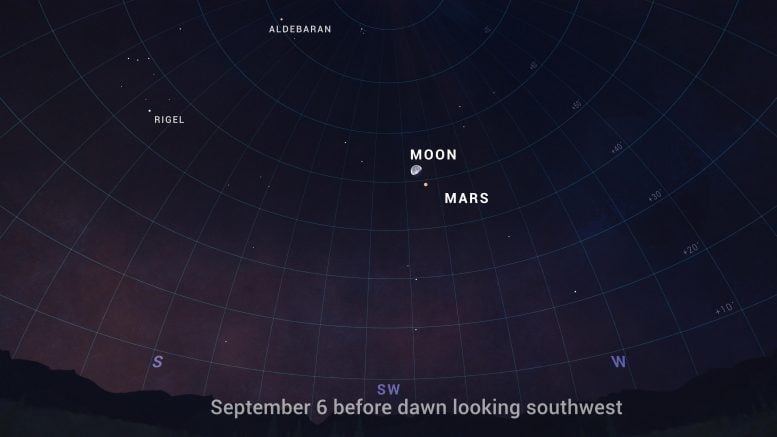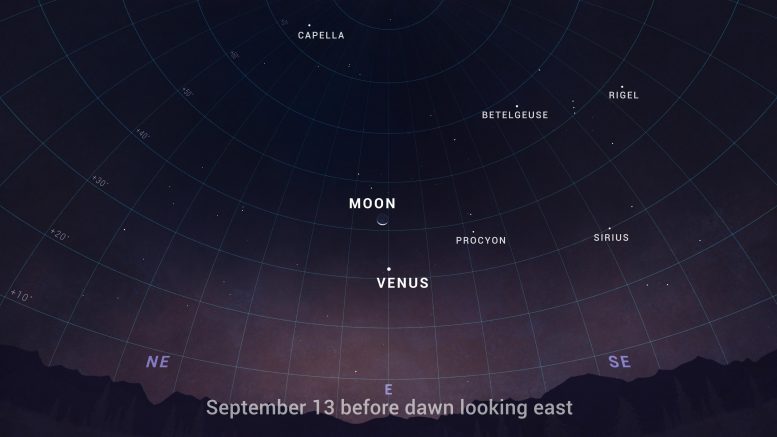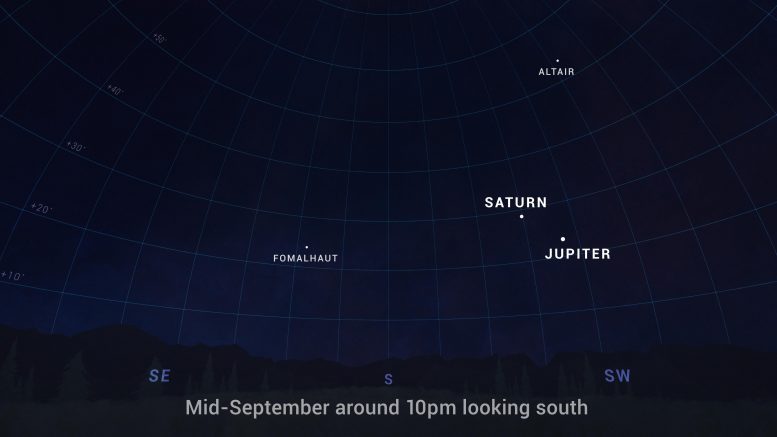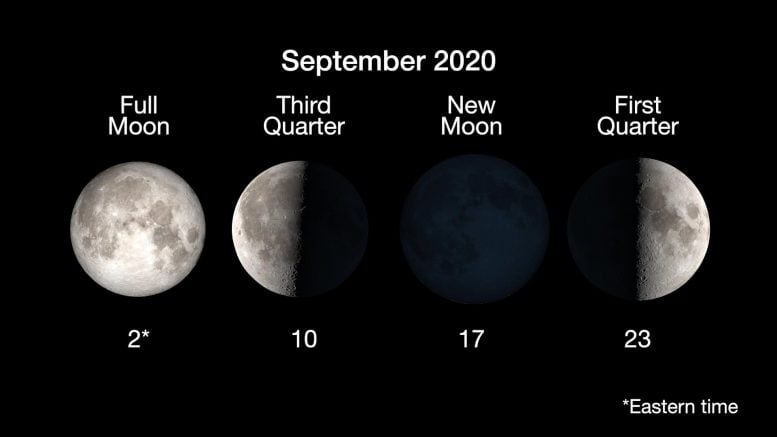September 2020 Skywatching Tips From NASA – Mars, Venus and a Star With a
What’s Up for September? The Moon with Mars and Venus, and a star with a planet…that wasn’t.
On September 6th, you’ll find the Moon extremely close to Mars in the predawn sky. Now, they were even closer back on August 9th, but still a really pretty spectacle this month. If you’re up early and can step outside for a look, they’ll be only a couple of degrees apart, meaning they’ll appear in the same field of view if you take a look with most binoculars.
On September 13th and 14th, look in the east before dawn to see the slim crescent Moon slip past brilliant Venus. On the 13th you’ll find the Moon hanging above Venus with about 20 percent of its surface illuminated. By the next morning, the Moon has moved here, to the left of Venus, and has only about 10 percent of its sunlit surface visible.
Looking toward the south in September, there’s really only one relatively bright star for most of us who live near cities. That star is called Fomalhaut, and it’s got a pretty interesting story. The star is about 25 light years away, meaning it’s relatively close by. It’s also fairly young, at just a few hundred million years, and it’s still surrounded by a disk of debris, which is a common feature for stars during their planet-forming phase. Now we’ve discovered thousands of exoplanets – planets outside our solar system – but Fomalhaut appeared to be the first star to have a planet detected by direct imaging with a telescope (that being the Hubble Space Telescope). Astronomers announced the find back in 2008.
So Fomalhaut had itself a planet! But this is where it gets interesting, as the “planet” had a funky orbit, wasn’t giving off excess heat like a young planet should, and proceeded to grow fainter over the several years that followed, disappearing by 2014. In April 2020, another team of astronomers using Hubble announced their finding that Fomalhaut’s “planet” wasn’t a planet after all. In fact, their study showed what Hubble detected was likely a giant, expanding cloud of debris resulting from a huge collision of two small bodies made of dust and ice, similar to worlds you might find in our own Kuiper Belt.
The scientists calculate collisions like this happen around Fomalhaut only every couple hundred thousand years, so Hubble just happened to be looking at the right time, not long after the collision took place.
So we may have lost a planet, but we gained a cool insight into how planetary systems form and evolve. You can find Fomalhaut low in the south a couple of hours after sunset, to the left of the bright pair of Saturn and Jupiter. Since it’s bright and low in the sky, it sometimes appears to flicker from atmospheric turbulence. That can cause some skywatchers to wonder just what the heck it is. Now you know: it’s Fomalhaut, the nearby star where it appears we witnessed a dramatic planetary collision.
Here are the phases of the Moon for September.
Daily Guide
August 28-30
On Friday night into Saturday morning, August 28 to 29, 2020, the bright planet Jupiter will appear near the waxing gibbous Moon, with the fainter planet Saturn appearing nearby. As evening twilight ends (at 8:44 p.m. EDT for the Washington, DC area), the Moon will appear in the south-southeast about 24 degrees above the horizon, with Jupiter appearing about 2 degrees above the Moon, and Saturn appearing about 9 degrees to the left. The Moon will reach its highest in the sky for the night at 9:55 p.m., appearing in the south about 26 degrees above the horizon. Jupiter and the Moon will set together in the west-southwest Saturday morning at 2:38 a.m., with Jupiter on the right and Saturn above the Moon.
Saturday evening, August 29, 2020, will be (for the Washington, DC area, at least) the first evening when Mercury will be above the horizon about 30 minutes after sunset, an approximation of when it will start being visible in the evening sky.
Saturday evening into Sunday morning, August 29 to 30, 2020, the planet Saturn will appear near the waxing gibbous Moon, with the brighter planet Jupiter appearing nearby. For the Washington, DC area, as evening twilight ends at 8:42 p.m. EDT, the Moon will appear in the south-southeast about 21 degrees above the horizon, with Saturn appearing to the upper right of the Moon and Jupiter appearing farther to the right. The Moon will reach its highest in the sky for the night at 10:49 p.m. and Jupiter will set first in the west-southwest Sunday morning at 2:34 a.m.
Even though they are not usually visible, I include in these Moon missives information about near-Earth objects (mostly asteroids) that may pass Earth within five lunar distances, because I find it interesting that we have discovered so many. Sometime in late August or early September…
Read More: September 2020 Skywatching Tips From NASA – Mars, Venus and a Star With a





